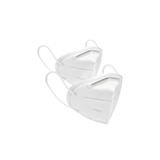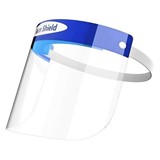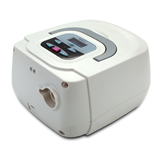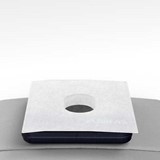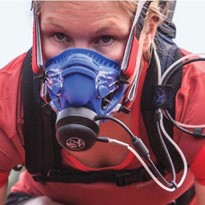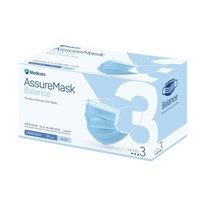Having the right type of face mask is more crucial than ever. Remember, it is not a good idea to go with the cheapest ones or those available in large quantities. Spend some time gathering information about face masks and the right grade for your application to ensure that you get the safest protection possible.
The 4 F’s of Choosing the Right Mask
- Filtration: If you’re exposed to a large crowd, have underlying medical conditions, or are attending to an ill family member, you need a high filtration mask, such as the N95 Respirator.
- Fluid Resistance: When you are at the risk of encountering bodily fluid splatter or blood, the Level 3 fluid-resistant mask will provide the best protection.
- Features: Face masks use different securement styles, including ties or loops. If you need to frequently wear masks, you must take masks with ear loops instead of ties. Another essential feature to look at is the anti-fog film, foam, and tapes. These features help to reduce distractions and fogging issues.
- Fit: If the mask fit is not correct, you could be at risk. A face mask needs to completely cover your nose and mouth. It must create a seal around the face to eliminate gaps that increase the risk of inhalation exposure.
The Feel is an additional F determining comfort and breathability. Remember, you need to wear the mask for longer durations and therefore, it must be comfortable.
Levels of ASTM barrier protection
The American Society for Testing and Materials (ASTM) tests and grades surgical masks. Currently, there are over 12,000 ASTM standards of protection.
Level 1: Low Barrier Protection
These masks are for general use. A Level 1 mask is an ear loop mask.
Level 2: Moderate Barrier Protection
These masks are for low to moderate levels of exposure and interaction. A majority of individuals should buy a Level 2 mask to stay safe and protected.
Level 3: Maximum Barrier Protection
These masks are for any situation and can protect you against higher levels of exposure and a particular risk group.
Testing Metrics
For grading purpose, these masks are tested to five criteria:
- Bacterial Filtration
- Particulate Filtration
- Fluid Resistance
- Breathability
- Flammability
The grade is higher when the mask has more resistance to any of these criteria. A higher grade mask guarantees higher protection.
|
Test |
Level 1 |
Level 2 |
Level 3 |
|
ASTM F1862 (Fluid Resistance) |
80 mmHg |
120 mmHg |
160 mmHg |
|
MIL-M-36954 C (Breathability) |
<4 mm H20 |
<5 mm H20 |
<5 mm H20 |
|
ASTM F2101: BFE (Filtration 3μm) |
≥95% |
≥98% |
≥98% |
|
ASTM F2299: PFE (Filtration 1μm) |
≥95% @0.1 micron |
≥98% @0.1 micron |
≥98% @0.1 micron |
|
16 CFR Part 1610 (Flammability) |
Class 1 |
Class 1 |
Class 1 |
All masks are not graded as per these tests. Therefore, you need to verify that the product you purchase has an ASTM grade and comes from a renowned manufacturer.
When you purchase a Level 2 mask in Australia, always look out for the ASTM level printed on the box. Along with the ASTM level, the label will also mention the level of fluid resistance. In case this information is not present on the box, the masks are not fit for use as per Australian standards and regulations.



